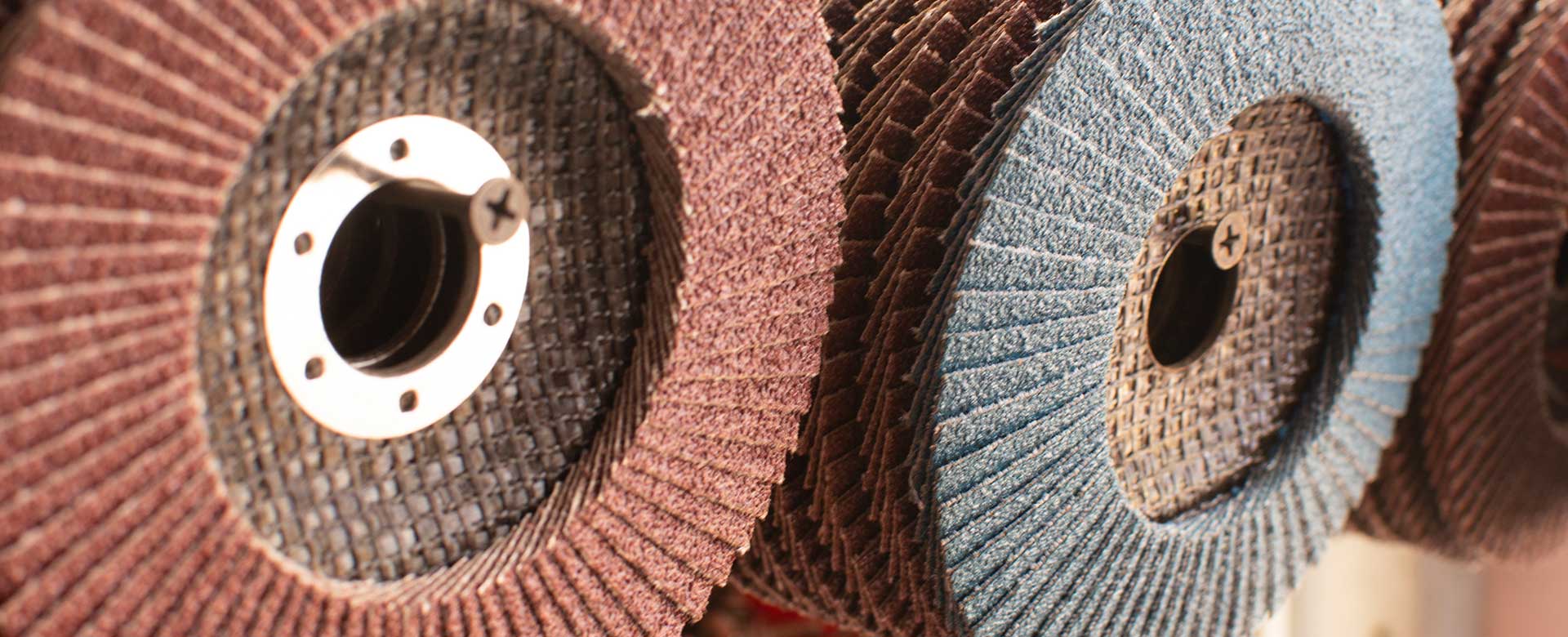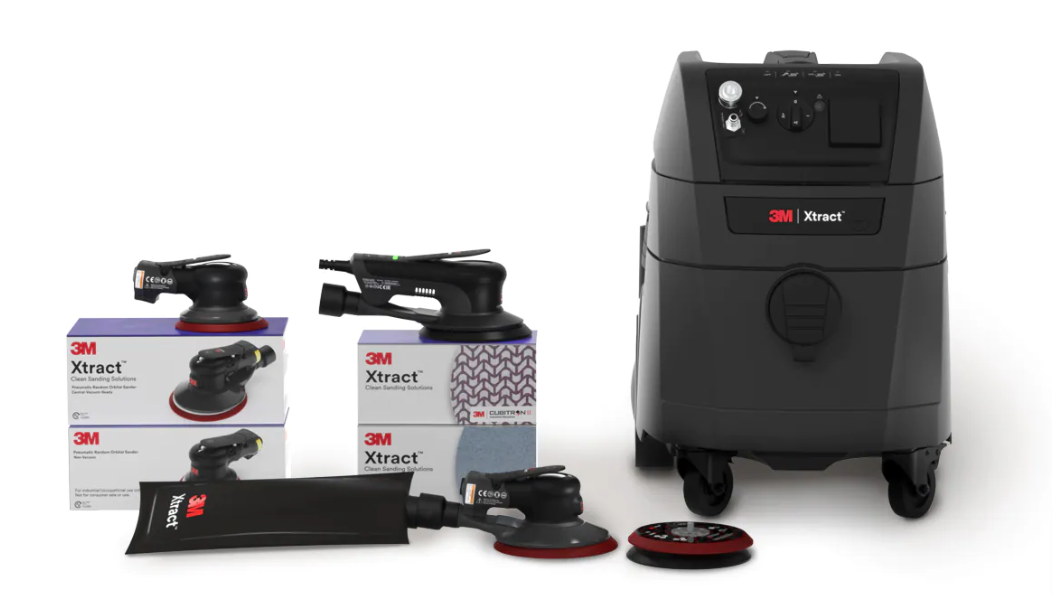Choose the right abrasive
Abrasives seem simple enough, right? But there are many on the market for various purposes and industries. Some might could say there are so many, it makes choosing the right abrasive hard!
Let’s start with why you need an abrasive. You could be removing materials, finishing (such as polish or smooth), cleaning, sharpening, or deburring.
Types of abrasives and why you need them
Each type of abrasive has its unique properties, advantages, and disadvantages. The choice of abrasive depends on factors such as the workpiece material and the operation being performed.
Here are the different types of abrasives commonly used:
- Bonded abrasives. Bonded abrasives are made up of abrasive grains that are bonded together with various materials like resin, rubber, or ceramic. Some examples of bonded abrasives include grinding wheels, honing stones, and mounted points.
- Coated abrasives. Coated abrasives consist of a backing material (such as cloth, paper, or film) coated with abrasive grains. Examples of coated abrasives include sandpaper, abrasive belts, and discs.
- Non-woven abrasives. Non-woven abrasives are made up of abrasive grains that are bonded to a non-woven fabric. They are commonly used for polishing and surface finishing applications.
- Superabrasives. Superabrasives are synthetic or natural abrasive materials that are used for high-precision grinding, cutting, and drilling applications. Some examples of superabrasives include diamond and cubic boron nitride (CBN).
- Loose abrasives. Loose abrasives are abrasive particles that are not bonded to any backing material. They are used for lapping, polishing, and other high-precision finishing operations.
- Abrasive powders. Abrasive powders are fine abrasive grains that are used for various applications such as polishing, deburring, and cleaning. Examples of abrasive powders include aluminum oxide, silicon carbide, and diamond powder.
Applications for abrasives
The material you’re using your abrasive on also figures into the equation of which abrasive you should use.
Wood
The best abrasive for woodwork depends on the specific task and the type of wood being worked on. You can use them on hardwoods and softwoods in different grits and sizes.
First, there’s the coated abrasive (sandpaper); it’s commonly used for woodwork. It’s available in various grits, ranging from coarse to fine, and can be used for tasks such as sanding raw wood, removing paint or varnish, and preparing surfaces for finishing.

Discs are made up of multiple overlapping flaps of abrasive material and are commonly used for sanding and finishing wood surfaces. They are available in different grits and are ideal for shaping and smoothing contours and curves.
Abrasive belts are commonly used for sanding flat or slightly curved wood surfaces. They are available in various grits and can be used with handheld sanders or stationary sanders.
Sponges are a flexible and versatile abrasive material that can be used for sanding and finishing curved or irregularly shaped wood surfaces. This is usually best for detail work or on unusually shaped wooden pieces.
Steel wool is a type of loose abrasive that is commonly used for sanding and finishing wood. It is available in different grades and can be used for tasks such as removing old finishes, preparing surfaces for staining or painting, and buffing to a high gloss.
In general, for finishing tasks, a fine-grit abrasive such as sandpaper or abrasive sponge may be the best choice, while for rougher tasks, a coarser abrasive such as steel wool or flap disc may be more appropriate. It’s always important to use the right abrasive for the specific task at hand to achieve the best results.
Metal
The best abrasive for metalworking depends on the specific task and the type of metal being worked on. Abrasives can be used on steel, aluminum, brass, and copper. Obviously, some of the materials are more malleable than others, requiring different abrasives.
Many metals use grinding wheels that are made up of abrasive particles held together by a bonding agent and are commonly used for grinding and shaping metal surfaces. They are available in various grits and can be used with handheld grinders or stationary grinding machines.
Metalworkers also use discs and belts. Discs are available in different grits and are ideal for shaping and smoothing contours and curves. Belts grind and finish flat or slightly curved metal surfaces. They are available in various grits and can be used with handheld sanders or stationary sanders.
Wire brushes are commonly used for removing rust, paint, or other surface coatings from metal surfaces. They are available in different types, such as twisted wire brushes or crimped wire brushes, and can be used with handheld grinders or power tools.
Finally, polishing compounds are a type of loose abrasive that is commonly used for polishing and buffing metal surfaces. They are available in different grades and can be used with polishing wheels or cloth.
Plastic
Working with plastics is trickier. You want to avoid damaging or melting the plastic, which can be easy to do.
Sandpaper and abrasive sponges are used on plastic. Again, if your piece is irregularly-shaped, a sponge might be perfect. Also, sponges are less likely to damage the plastic, which may mean you want to start there if you’re unsure.
Abrasive pads are similar to abrasive sponges and are also a good choice for sanding and finishing plastics. They are available in different grits and can be used with handheld sanders or by hand.
Here, polishing compounds again may help. Be sure to read the ingredients to verify they can be used on plastic. Again, plastic can be melted and damaged easily.
Concrete
You can even use abrasives on concrete. It’s a popular choice, these days, for modern kitchen countertops. In general, diamond abrasives are the preferred choice for concrete grinding and polishing because they are more durable and longer lasting than other types of abrasives.
Diamond grinding wheels grind and shape concrete surfaces. They are available in various grits and can be used with handheld grinders or stationary grinding machines.
Polishing pads polish and refinish concrete surfaces. They are available in different grits and can be used with handheld polishers or floor machines.
Some people who handle concrete floors and countertops use abrasive blasting media, such as sand or shot, to clean and etch concrete surfaces. This is commonly done to prepare a surface for painting or other types of coating. Or it can add those finishing touches that your customer requests.
Stone (natural or engineered)
Stone, such as granite and quartz, as well as engineered materials created to look like stone are popular choices these days among consumers. Both stone and natural stone are used inside and out, around fireplaces, and in countertops. And both need abrasives to polish, cut, and smooth them, albeit the types of abrasives vary.
You can shape stone edges, remove scratches, and create a smooth finish. Depending on the type of stone, such as your hardest stone, you may need diamond abrasives to cut the material.
Polishers and polishing compounds are also used to smooth and finish this material.
Elevate can help you choose
Abrasives can be used for glass and ceramics, too. Your purpose and material dictate which abrasive you should use. And even then, there are different options from different companies from Uneeda to VSM to 3M to Alpha to Diamond Vantage and more. Some woodworkers, metalworkers, countertop fabricators and installers, and folks who work with plastics may even have a preference based on what they’ve used before.
We’re experts at helping you get the right abrasives for your projects, including various options with different price points. Let us help you find what works for your company to save you time, reduce overall costs, and improve the quality of your product.





